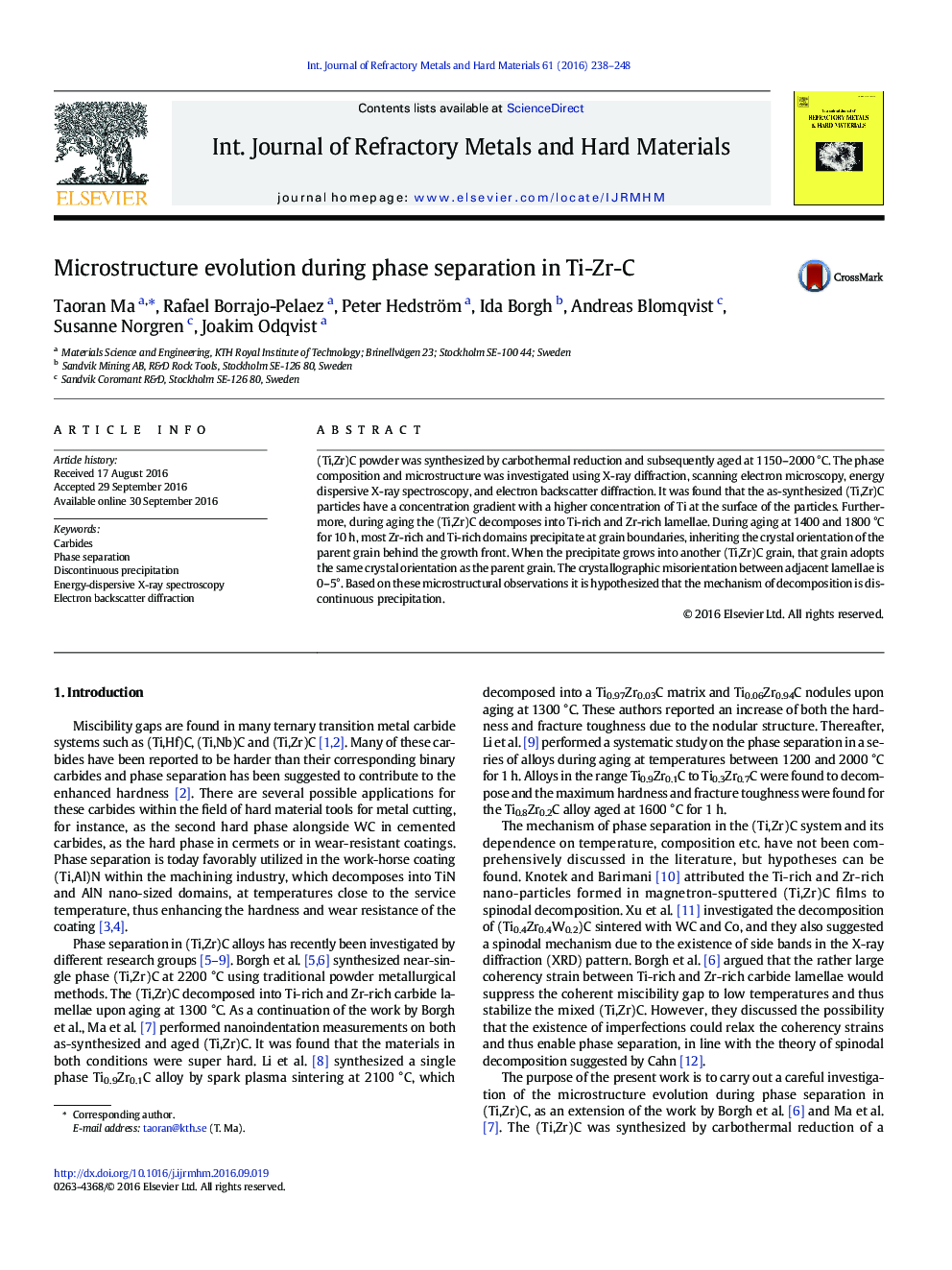| Article ID | Journal | Published Year | Pages | File Type |
|---|---|---|---|---|
| 7989963 | International Journal of Refractory Metals and Hard Materials | 2016 | 11 Pages |
Abstract
(Ti,Zr)C powder was synthesized by carbothermal reduction and subsequently aged at 1150-2000 °C. The phase composition and microstructure was investigated using X-ray diffraction, scanning electron microscopy, energy dispersive X-ray spectroscopy, and electron backscatter diffraction. It was found that the as-synthesized (Ti,Zr)C particles have a concentration gradient with a higher concentration of Ti at the surface of the particles. Furthermore, during aging the (Ti,Zr)C decomposes into Ti-rich and Zr-rich lamellae. During aging at 1400 and 1800 °C for 10 h, most Zr-rich and Ti-rich domains precipitate at grain boundaries, inheriting the crystal orientation of the parent grain behind the growth front. When the precipitate grows into another (Ti,Zr)C grain, that grain adopts the same crystal orientation as the parent grain. The crystallographic misorientation between adjacent lamellae is 0-5°. Based on these microstructural observations it is hypothesized that the mechanism of decomposition is discontinuous precipitation.
Keywords
Related Topics
Physical Sciences and Engineering
Materials Science
Metals and Alloys
Authors
Taoran Ma, Rafael Borrajo-Pelaez, Peter Hedström, Ida Borgh, Andreas Blomqvist, Susanne Norgren, Joakim Odqvist,
